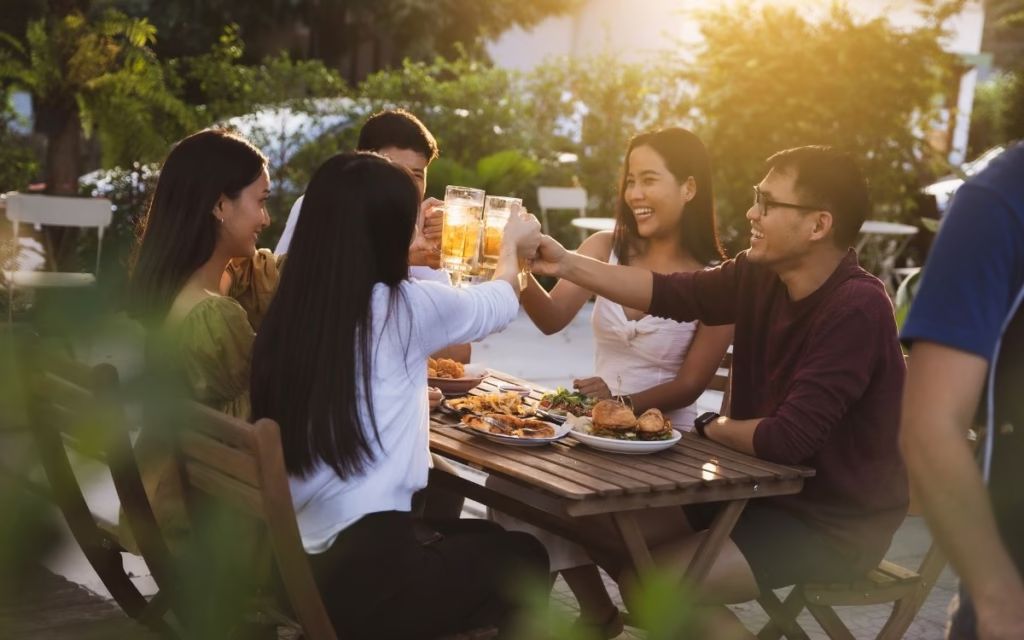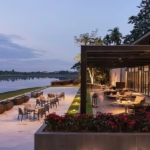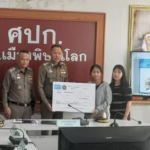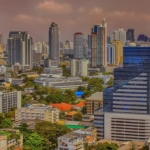CHIANG RAI — As cool-season travellers head north, a policy shift in the Government threatens to chill the party. The new Alcohol Law under the Alcoholic Beverage Control Act (No. 2) B.E. 2568 (2025), due to start on 8 November, has set restaurant owners on edge across the country.
What began as a row over sales hours has turned into a nationwide backlash, with operators warning that strict limits on drinking during barred periods could stall Thailand’s tourism push. From Chiang Rai’s night bazaars to Phuket’s beachfront kitchens, frustration is building.
The revised Act closes a gap that many venues relied on. Under the 2008 rules, venues could not sell alcohol from midnight to 11 a.m., and from 2 p.m. to 5 p.m., but guests were often allowed to finish drinks bought before the cut-off. That ends now.
Section 32 bans consumption in any licensed premise during prohibited times, even if the drink was purchased earlier. Anyone caught, including visitors finishing a beer after midnight, could face fines of up to 10,000 baht, with repeat breaches risking licence suspensions or loss.
The Department of Provincial Administration has warned operators to expect tougher checks, saying the priority is to curb late-night excess and improve safety. In practice, staff in Chiang Rai’s riverside bars will become timekeepers, asking customers to stop drinking as the clock hits midnight.
“It is no longer only about sales, it is about every sip,” said a veteran Chiang Rai operator, requesting anonymity. Supporters frame the move as a way to tackle drunk driving and underage access. Many owners see it as a heavy-handed fix that punishes compliant venues.
Restaurant Owners Push Back Over Alcohol Law
Hospitality groups have responded quickly and sharply. Many restaurants are still recovering from the pandemic slump, and night-time trade is their anchor. Evening diners often linger, sharing craft beer or wine with tom yum goong or khao soi. Forced dry periods in peak hours, they say, will crush margins.
In a statement last week, Chanon Koetcharoen, president of the Thai Restaurant Association (TRA), called the law short-sighted and damaging to jobs. The TRA, which represents more than 10,000 venues, said the previous leeway let customers finish their drinks without fuss.
“People do not understand why they cannot end a meal in peace,” Koetcharoen told reporters. “It is not only awkward, it makes Thailand look inhospitable.” The group has asked the Public Health Ministry to allow carve-outs in tourist areas, arguing that blanket rules ignore local culture, including all-night celebrations during Loy Krathong in Chiang Rai.
Small businesses share the fear. In a TRA survey of 500 members, 68% forecast at least a 20% revenue drop after November, with northern venues most exposed during seasonal lulls. “We built ambience and live music to keep people longer,” said Noi Srisuk, who runs a hilltop grill in Mae Sai. “By 11 p.m. we will be empty, while bars across the Lao border stay lively.”
The damage could spread beyond dining rooms. Tourism is a core pillar of the economy, delivering 3.2 trillion baht last year and supporting millions of jobs. The government has billed 2025 as the Amazing Thailand Grand Tourism Year, targeting 40 million visitors. The new rules could derail that target.
Operators in Pattaya’s nightlife sector warn of a hit to the country’s image. In a letter to Prime Minister Paetongtarn Shinawatra, the Pattaya Entertainment Operators Association said the ban could cut coastal visitor numbers by 15%, as late-night fun is a key draw for European and Australian travellers.
“Visitors come for the energy, not a curfew,” said association head Lisa Wong. Tourism Authority of Thailand (TAT) data backs the concern, noting that alcohol spending makes up about a quarter of foreign visitors’ outlays, much of it in restaurants and bars. Northern destinations will feel it too. Chiang Rai’s new wine routes and craft beer spots could stall if guests cannot enjoy a local red with dinner after dark.
Forecasts point to a meaningful dip. A TAT-commissioned study projects a 5% to 7% drop in tourism revenue with strict enforcement, equal to around 200 billion baht, money that could otherwise fund long-term projects. “Health and heritage need balance,” said TAT’s northern director. “If guests feel policed, Vietnam will look more welcoming.”
By The Numbers: Drinking In Thailand
Thailand’s drinking profile helps explain the stakes. Per capita intake sits near 7.99 litres of pure alcohol a year, based on World Bank 2020 data with stable trends to 2025, a middle-of-the-pack rate globally but up roughly 20% since 2005, according to Statista.
About 28% of adults aged 15 and over drink regularly, the 2021 Health Behaviour Survey shows, with men outnumbering women 4 to 1. Spirits, including lao khao, lead with about 45% of volume, beer follows at roughly 40%, and tourism has lifted wine and craft imports.
The sector is big business. Euromonitor estimates at-home alcohol sales at 16.29 billion US dollars in 2025, with total volume near 2.43 billion litres. Harms are significant. Alcohol-attributable deaths reached about 12,500 in 2021, up 8% from 2015, feeding non-communicable diseases like liver cirrhosis and adding to road accidents, according to Burden of Disease Thailand. Cost-of-illness studies put lifetime costs for heavy drinkers around 1.65 million baht, including healthcare and lost output.
Public health groups welcome the shift. The Thai Health Promotion Foundation, known as Thaifox, calls the Act a strong shield against rising harm. “This is not prohibition, it is prevention,” said Dr Siriwat Tiptaradol, the group’s director.
He cited WHO comparisons, noting Thailand sits below Europe’s 10-plus litre levels, yet binge patterns are common, with about 15% of drinkers consuming four or more drinks per session in 2021 surveys. Advocates say the law targets these spikes and could prevent around 2,000 NCD cases each year.
Experts such as epidemiologist Sawitri Assanangkornchai at Prince of Songkla University stress the gender gap. Female rates remain under 10%, but heavy drinking among men drives about 80% of alcohol-related deaths. “Fines can deter risky behaviour, especially after midnight,” she said. The Ministry of Public Health supports the changes and plans tourist education with the TAT, including multilingual tools that flag no-consumption periods and zones.
Some health campaigners call for a careful rollout. The Alcohol Control Network, a coalition of NGOs, wants fair enforcement over blanket punishment. The group backs tighter advertising rules, including bans on influencer tie-ins and CSR tactics, but worries about uneven policing in rural areas such as Chiang Rai, where bootleg lao khao is common.
As 8 November nears, Thailand stands between celebration and restraint. Owners prepare protests, health advocates call for vigilance, and police are ready for new checks. In Chiang Rai’s lantern-lit streets, one truth stands out. The argument over alcohol is flowing faster than any bottle. Will these rules steady the country, or leave tourism with a lingering headache? Time, and a few legal challenges, will tell.
















